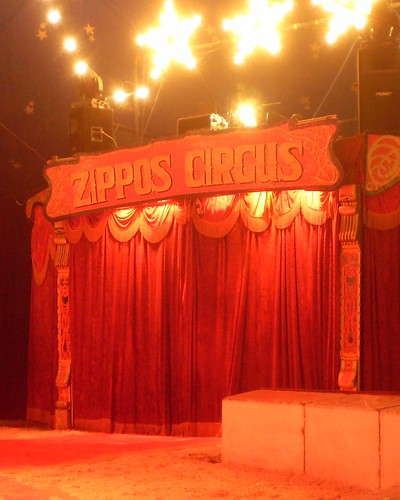Faculty Research: Steve Hoelscher on Reading Magnum
In honor of all the great events taking place this week surrounding the Magnum Symposium: Magnum Photos into the Digital Age, (including a lecture by Alec Soth - tonight!) we want to draw your attention to an incredible book edited by our own Dr. Steve Hoelscher: Reading Magnum: A Visual Archive of the Modern World (UT Press, 2013). We sat down with Dr. Hoelscher a few weeks ago and chatted about the ins and outs of putting together such a rich, complex book about this storied institution. Reading Magnum was a four-year project, which, in comparison to most academic projects, is light-speed. The book is not a catalogue, though its publishing coincides with the Magnum exhibition at the Harry Ransom Center, Radical Transformation: Magnum Photos into the Digital Age. With the arrival of the Magnum collection of photographs at the Ransom Center in 2009, Dr. Hoelscher began work on this far-ranging consideration of the historical, political, and cultural context in which Magnum has worked since its founding in the wake of World War II.
We sat down with Dr. Hoelscher a few weeks ago and chatted about the ins and outs of putting together such a rich, complex book about this storied institution. Reading Magnum was a four-year project, which, in comparison to most academic projects, is light-speed. The book is not a catalogue, though its publishing coincides with the Magnum exhibition at the Harry Ransom Center, Radical Transformation: Magnum Photos into the Digital Age. With the arrival of the Magnum collection of photographs at the Ransom Center in 2009, Dr. Hoelscher began work on this far-ranging consideration of the historical, political, and cultural context in which Magnum has worked since its founding in the wake of World War II. Instead of focusing on Magnum's photographic "geniuses," the book takes a decidedly more contextualist approach to the archive. Dr. Hoelscher did not want to represent a hermetically-sealed vision of the photography world; he wanted to bust things open and make connections across photographers, time periods, and subjects. To add depth to the work, Dr. Hoelscher contacted a diverse group of scholars to contribute essays to Reading Magnum: Alison Nordstrom, Barbie Zelizer, Frank H. Goodyear III, Erika Doss, Robert Hariman, and Liam Kennedy. The work is theoretically informed, but style is paramount and clarity key. It is also, as you can see from just a couple of the spreads, incredibly beautiful.
Instead of focusing on Magnum's photographic "geniuses," the book takes a decidedly more contextualist approach to the archive. Dr. Hoelscher did not want to represent a hermetically-sealed vision of the photography world; he wanted to bust things open and make connections across photographers, time periods, and subjects. To add depth to the work, Dr. Hoelscher contacted a diverse group of scholars to contribute essays to Reading Magnum: Alison Nordstrom, Barbie Zelizer, Frank H. Goodyear III, Erika Doss, Robert Hariman, and Liam Kennedy. The work is theoretically informed, but style is paramount and clarity key. It is also, as you can see from just a couple of the spreads, incredibly beautiful. According to Dr. Hoelscher, Magnum was in many ways the post-war geographic information system, and place as much as narrative defined the Magnum project. Magnum photographs published and re-published around the globe constructed a certain understanding of the world in the second half of the 20th century and into the 21st. While many of the photographs featured in the book look at the horrors of war, there are also examples of photographs that addresses the quotidian, street life, stardom, and Civil Rights struggles. Scattered throughout the book are illuminating "Notes from the Archive" sections that give a behind the scenes look at the process of photographic distribution as well as "Portfolio" sections that highlight themes that wind through the archive: portraiture, geography, cultural life, social relations, and globalization.Definitely check out the Magnum exhibition at the Ransom Center, up until January 5, and get your hands on this beautiful book!
According to Dr. Hoelscher, Magnum was in many ways the post-war geographic information system, and place as much as narrative defined the Magnum project. Magnum photographs published and re-published around the globe constructed a certain understanding of the world in the second half of the 20th century and into the 21st. While many of the photographs featured in the book look at the horrors of war, there are also examples of photographs that addresses the quotidian, street life, stardom, and Civil Rights struggles. Scattered throughout the book are illuminating "Notes from the Archive" sections that give a behind the scenes look at the process of photographic distribution as well as "Portfolio" sections that highlight themes that wind through the archive: portraiture, geography, cultural life, social relations, and globalization.Definitely check out the Magnum exhibition at the Ransom Center, up until January 5, and get your hands on this beautiful book!
Faculty and Grad Research: Dr. Janet Davis and Jeannette Vaught in American Quarterly
 Those subscribing to American Quarterly will notice that two members of our community, Dr. Janet Davis and Jeannette Vaught, have both published articles in the September 2013 issue. The special issue, Species/Race/Sex, considers the "interdisciplinary and political challenges to thinking intersectionally about species, race, and sex."A quick abstract of Janet's piece, entitled "Cockfight Nationalism: Blood Sport and the Moral Politics of American Empire and Nation Building":
Those subscribing to American Quarterly will notice that two members of our community, Dr. Janet Davis and Jeannette Vaught, have both published articles in the September 2013 issue. The special issue, Species/Race/Sex, considers the "interdisciplinary and political challenges to thinking intersectionally about species, race, and sex."A quick abstract of Janet's piece, entitled "Cockfight Nationalism: Blood Sport and the Moral Politics of American Empire and Nation Building":
This essay explores the symbiotic relationship between animal welfare and ideologies of nation building and exceptionalism during a series of struggles over cockfighting in the new US Empire in the early twentieth century. Born out of the shared experience of American overseas expansionism, these clashes erupted in the American Occupied Philippines, Cuba, and Puerto Rico, where the battle lines pitting American-sponsored animal protectionists against indigenous cockfight enthusiasts were drawn along competing charges of cruelty and claims of self-determination. I argue that battles over the cockfight were a form of animal nationalism—that is to say, cockfight nationalism. Cockfight enthusiasts and opponents alike mapped gendered, raced, and classed ideologies of nation and sovereignty onto the bodies of fighting cocks to stake their divergent political and cultural claims regarding the rights and responsibilities of citizenship, moral uplift, benevolence, and national belonging.
And a quick abstract of Jeannette's, entitled "Materia Medica: Technology, Vaccination, and Antivivisection in Jazz Age Philadelphia":
During the 1920s, the Philadelphia-based American Antivivisection Society turned to racialized metaphors in its circulating periodical, the Starry Cross, to excoriate the expanding practice of vaccination. Since vaccines were then made from animal-derived serums, the involvement of antivivisectionists in antivaccine arguments is not surprising. However, the Philadelphia society’s strange combination of vaccination, jazz, and vivisection reveals that its motivations to protect animals were deeply bound to broader cultural anxieties about the threat to purity posed by science, race, and sex, and that the stakes of succumbing to vaccination amounted to no less than medical miscegenation. By turning to racialized, speciesist arguments in asking for mercy toward animals against scientifically minded torture, the antivivisectionists’ use of the sound and image of the tortured animal was meant more to protect the human body and keep it white.
Enormous congratulations to both of them! We've linked to their pieces above; go forth and take a look.
Faculty Research: Janet Davis Interviewed in Spirit Magazine
 Hey there, sports fans! We'd like to alert you to the fact that Dr. Janet Davis was recently interviewed for a lengthy piece on a young man's work in the circus in Spirit Magazine, the in-flight magazine for Southwest Airlines. Take a look at the excerpt below and click here to read the full piece.
Hey there, sports fans! We'd like to alert you to the fact that Dr. Janet Davis was recently interviewed for a lengthy piece on a young man's work in the circus in Spirit Magazine, the in-flight magazine for Southwest Airlines. Take a look at the excerpt below and click here to read the full piece.
Jesse’s challenge is more complex: In going to college, he was encouraged to step beyond a community in which he already knew his place. "All of a sudden you’ve got to rebuild, you know? And find your identity," he says. In high school, he was a big man on campus—the star jock, a promising scholar, the circus kid, a rural success story. At SMU, among the children of Dallas’ elite? “It seemed like the kids there were entitled to be there. One’s mom is the CEO of Victoria’s Secret. He lived in my dorm. I was like, 'Your mom owns Victoria’s Secret?' It’s heavy-duty; heavy-duty people. And I was like,'‘My dad owns a circus."'Plenty of college kids plow through these crises of self and set a course for their adult lives. If Jesse were just another boy shocked to discover that his strutting high school persona amounted to nothing in college, he might have toughed it out. But the circus offered an escape from the disorientation SMU stirred in him; it gave him a purpose. In bailing, Jesse wasn’t running away to join the circus, he was running home to it.Now he’ll have to pull off the same tricks his forebears did. Despite its robust past, the circus has repeatedly had to evolve to avoid extinction. Although today’s audiences are harder to come by, the circus arts have become popular among kids. More than 350 instructional youth circuses operate in America, a quarter of them having emerged in the past 10 years. "The challenge for Jesse’s generation," says author and circus historian Janet M. Davis, "is to bring all of these young people into the broader circus fold."
Announcement: More on American Studies and the Texas Bookshelf Project
 Last week, we shared the exciting news from UT Press about their new Texas Bookshelf series, a 5-year, 16-book series from UT faculty centering on what Texas is and means. Today, we have a few more details about the project (and our our faculty members' involvement in the project) from department chair Dr. Elizabeth Engelhardt.And stay tuned this fall for more specific details about each of these four approaches to Texas.
Last week, we shared the exciting news from UT Press about their new Texas Bookshelf series, a 5-year, 16-book series from UT faculty centering on what Texas is and means. Today, we have a few more details about the project (and our our faculty members' involvement in the project) from department chair Dr. Elizabeth Engelhardt.And stay tuned this fall for more specific details about each of these four approaches to Texas.
Four core faculty members in American Studies are among the distinguished faculty chosen as authors in the Texas Bookshelf Project. Designed to be the most ambitious and comprehensive publishing endeavor about the culture and history of one state ever undertaken, the book series and website will draw on the state’s brightest writers, scholars, and intellectuals.
Professors Bob Abzug, Elizabeth Engelhardt, Karl Hagstrom Miller, and Shirley Thompson each will write for the series. The Department of American Studies thereby is contributing to the project more authors—in sheer numbers and in percentage of faculty—than any other department on campus. Were we to add in our American Studies affiliate faculty members, we might need to rename it the TexAMS Bookshelf.
In the words of President Bill Powers, “Texas deserves a comprehensive series of books that explores its history and culture. A collaboration between our esteemed faculty and UT Press is the ideal way to produce The Texas Bookshelf and to share the rich resources of this campus with the rest of the world.”
American Studies is proud to participate in the endeavor.